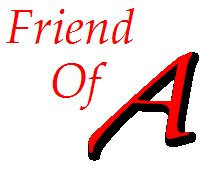Continuing self-reflection on more than a decade of Biology instruction at Bullard High School, I think about the time spent in lecture, delivering content. Again, this is an area of instruction that I tend to devote quite a bit of energy to, typically more than my colleagues. There are a lot of reasons for that, and some of them frankly have very little to do with instruction.
Before I was a high school biology teacher, I was a musician and a performer. For me, lecture is performance art, a mixture of low comedy, snippets of song, striking images, provocative questions (and imagery), hopefully wrapped into a narrative that conveys a story of sorts, not merely a recitation of key facts or concepts. The investment that I've brought into such presentations has made me a better teacher, but it also raises the question of how much energy such items take away from other aspects of instruction. I observe, for example, that the time spent lecturing could also be spent with students creating something of their own, doing labs, having experiences. Many of my colleagues are quite a bit more accomplished in these areas than myself, and I would like to see my students have more of these opportunities.
As with testing, the question becomes how much to reduce the amount of time and energy, or at least to the amount of same within the classroom setting. Consider the picture below, which shows a series of file folders. Each orange folder contains a Lecture Guide, which is a partly a 'fill-in-the-blank' recap of key items from the lecture, and partly a series of exercises with illustrations that challenge students to apply the items from the lecture to various problems. Each Lecture Guide also represents one or more Power Point-based lectures and (typically) 2-3 days of instruction.

As you can see from the picture above, that's a significant investment. The Lecture Guides were originally developed as a means to make lectures go faster...but what I discovered was that too many students simply filled in the blanks, didn't do the application exercises, and in general failed to engage with the material. So I abandoned using them this way, returned to conventional lecturing straight into their Composition Books, and used these assessments as means to assessing the completeness of their notes (and as a means for them to self-assess themselves). At the same time, I began the practice of making the class notes available for download from the class blog. Now, the downside of this is the amount of time taken which could've been used for other activities.
Now, I'm loth to abandon these materials that I've invested so much time and energy, and at any rate I have to lecture, because it is the most efficient way to ensure in-class coverage of all the material, and where Biology is concerned, there is much to cover: 50 mandatory standards, 20 additional 'optional' ones, all to be covered in the 140-odd days in the school year prior to the dreaded state tests. At best, you have slightly less than three days per standard!
So, here's the new plan: lecture, as before, but in a streamlined (and fast-paced) way. Expect students to complete their notes on their own time by comparing the outlines and headings of their comp books with the complete Power Points, downloaded as needed from on-campus computers or the class blog. Assess with the Lecture Guides prior to the test, and directly from their Composition Books on the day of the test. I plan to teach it to students with a flowchart that makes explicit the work they must do outside of class just to complete the material. In principle, looking at the number of Lecture Guides, I should be able to free up 20-25 days of instruction prior to state tests, for other activities to enrich the course and promote mastery of the standards.
Anyway...that's the plan.



